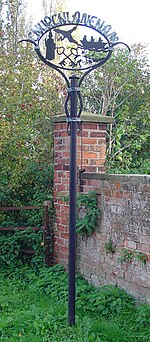Dunham-on-Trent
Dunham-on-Trent is a village and civil parish in Nottinghamshire, England. It is located on the A57 road, about 0.5 miles (0.8 km) west of Dunham Bridge, a toll bridge crossing the River Trent. According to the 2001 census it had a population of 351, falling slightly to 343 at the 2011 Census.The earliest part of the Grade I listed parish church of St Oswald is the tower, dating from the 15th century and Perpendicular in style. The rest is mostly Victorian, built 1861–62 by T.C. Hine, father of George Thomas Hine, though the south nave wall remains from an earlier reconstruction completed in 1802.The site of Whimpton Village, a deserted medieval village, is about 1.25 miles (2.0 km) west of Dunham.
Excerpt from the Wikipedia article Dunham-on-Trent (License: CC BY-SA 3.0, Authors).Dunham-on-Trent
The Green, Bassetlaw Dunham-on-Trent
Geographical coordinates (GPS) Address Nearby Places Show on map
Geographical coordinates (GPS)
| Latitude | Longitude |
|---|---|
| N 53.26 ° | E -0.78 ° |
Address
The Green
The Green
Bassetlaw, Dunham-on-Trent
England, United Kingdom
Open on Google Maps








